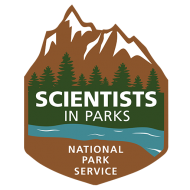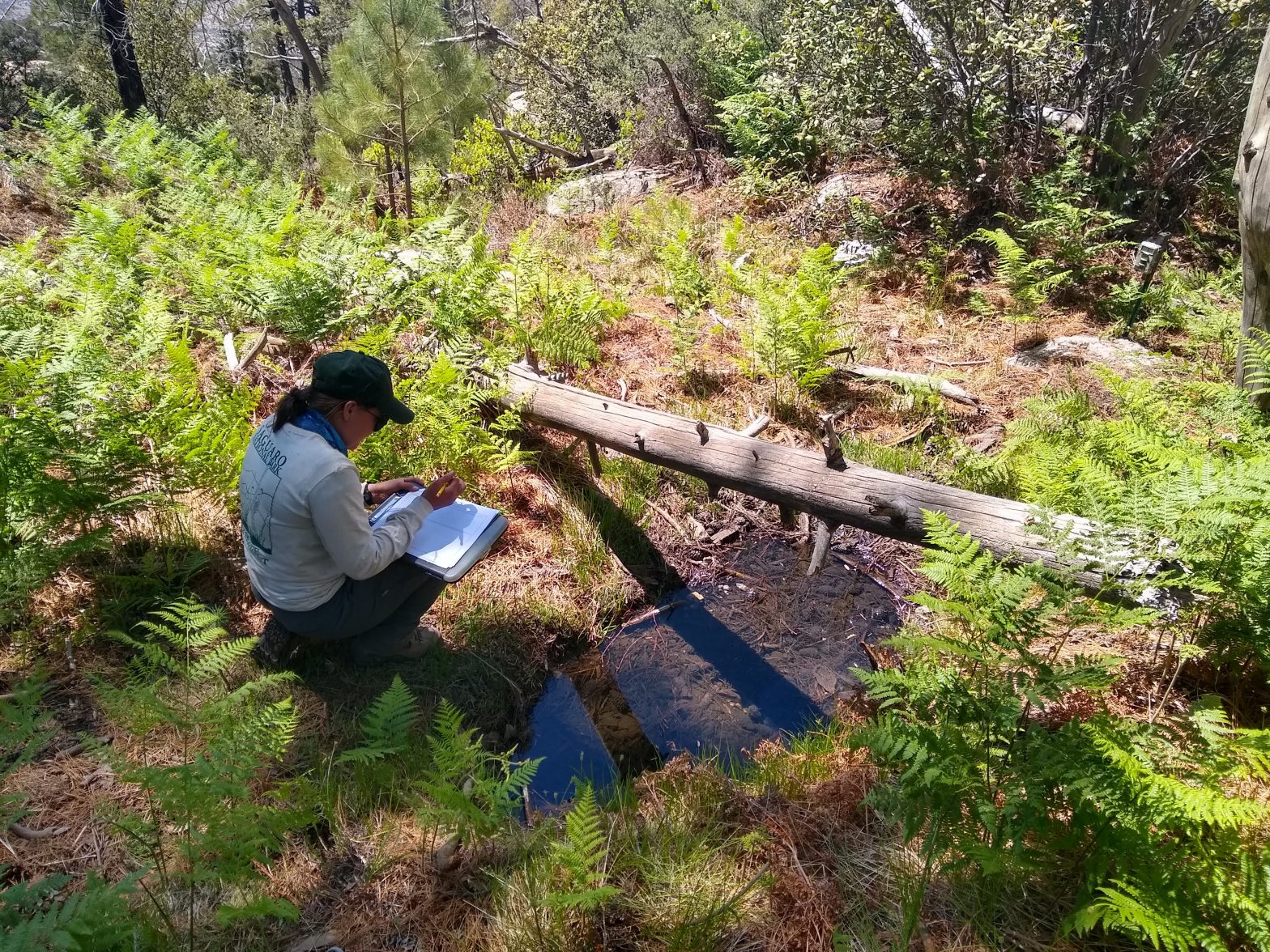When entering grad school, you tend to find yourself heading towards a “specialty”. You often choose a focus in a specific field or study species and end up collecting a fairly niche set of skills and knowledge.
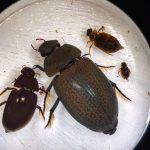
For me, aquatic ecology and entomology became my niche (and a small one at that). But what has been refreshing about working in a natural resource management division at a national park is the opportunity to work outside of my existence as a specialized grad student and participate in more general big-picture science. I have learned that resource staff at Saguaro often wear a lot of hats—they may simply be self-taught out of passion, have a lot of experience in a specific field, or a little in many, but regardless they all manage or contribute to a wide variety of projects that advance the understanding and management of all the resources within the park.
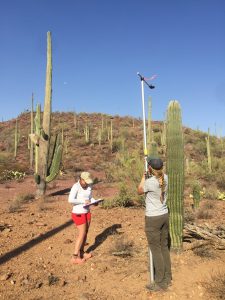
I was hired to monitor the high elevation springs by placing camera traps and conducting springs assessments. While this is most of the work, I have had the opportunity to be a part of many of the park’s other projects. This includes saguaro phenology in the low desert, as well as agave phenology, butterfly surveys, viewshed surveys, owl surveys, and systematic mapping for vegetation when on hitch in the higher elevations. As one of the only crew members going up to Manning Camp on a regular basis this summer, we are often asked to opportunistically collect data for others since we are up there so frequently. On days not devoted to springs, we often search for butterflies or rare plants, or perform any other surveys that need to be done.
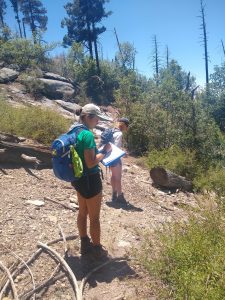
It was on one of these days that we went in search of a wild rose that had not been documented in the park since 1909. The first and only time the rose was documented in the park was 112 years ago and we wanted to know if it still existed within the park. We systematically searched the dense thicket of underbrush in the aspen grove in which it was first found and miraculously after about half an hour of searching we found the first plant. Then another. And another. In total the population probably contained about 200 plants.
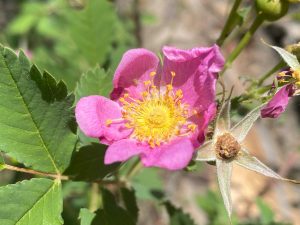
Despite the length of time between the last sighting, not to mention climate change and drought, this rare rose was not just hanging on but thriving within the park. The passion and excitement for finds like this among the staff at all levels is contagious. It’s exciting to be present when a small part of park history is made, and the people around you are just as excited. The resource staff work incredibly hard, and I am fortunate to work with such passionate people who care deeply care about the research and the park.
